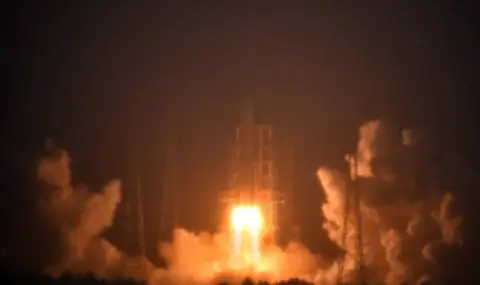China has successfully launched the Chang'e-6 probe, which will take soil samples from the far side of the moon and return them to Earth in less than two months. According to the China National Space Administration (CNSA), the Long March 5 Y8 launch vehicle with the lunar probe on board was launched from the Wenchang Satellite Center off the coast of South China's Hainan Island Province.
37 minutes after launch, the rocket's second stage separated, sending Chang'e-6 into a designated Earth-Moon transfer orbit with a perigee of 200 km and an apogee of about 380 thousand km. After a series of maneuvers, the probe will land in the South Pole-Aitken Basin crater on the far side of the Moon, where it should collect 2 kg of lunar rock samples. According to CNSA plans, 53 days are planned for the mission.
For communication between the probe and Earth, the previously launched Queqiao-2 relay satellite will be used, which will allow data transmission to ground stations and back. Chang'e 6 consists of an orbital module, a return module, a descent module and a lunar launch module. The lunar probe is reportedly equipped with a dedicated landing camera, a panoramic camera, an instrument for spectral analysis of minerals and an instrument for analyzing the structure of the lunar soil.
Retrieval of lunar soil samples will be performed using a drilling platform and a robotic bucket. The probe also has international instruments on board, including the French DORN detector to measure the concentration of radon gas and its decay products on the surface of the natural satellite, an Italian laser corner reflector, the European Space Agency's NILS negative ion analyzer and the ICUBE-Q small satellite from Pakistan.
Once the collection is complete, the lunar soil samples, sealed in a container, will be delivered by the Ascent Module to a lunar orbit, where they will hop on board the orbiter. The return vehicle will then deliver the samples to Earth, landing in northern China, in the Inner Mongolia Autonomous Region.
